The Monarch exemplifies the classic 13th century Type X medieval sword. The type X was in common usage from the time of the Vikings throughout much of the middle ages, and is recognizable for its broad blade with full-length fuller. This version has a distinctive “Brazil nut” pommel, common to the mid-1200’s and beyond but most clearly represented on the type X to type XI transitory blades. The Monarch has the long, tapered blade typical of the cut-and-thrust swords that evolved to counter the increasing advances made in armor protection, and the curved guard is consistent with the numerous surviving 13th century Brazil nut swords found in museums and collections. The Monarch is a classic design that will be a unique presence in any collection.
The blade of the Monarch is forged from mirror-polished 5160 high carbon steel which is differentially tempered to possess a hardened edge of 60 HRc steel and a flexing, shock absorbing core of 48-50 HRc hardness. The guard and pommel are of steel and the wooden grip is bound in leather. The blade is securely anchored into the hilt with a robust peen on the pommel. Included with the sword is a wood-core scabbard which is tightly bound in leather and completed with an integrated sword belt and a protective steel chape.
Since ancient tribal times, humans have tended to organize themselves into hierarchies. These would at first have been nomadic bands of hunter-gatherers, though as agriculture led to the rise of cities and more stabilized, centralized cultures there would be individuals who sought to lead. Those who led larger groups of people could gather immense amounts of power, and when that power gained enough momentum to pass the boundary of generations it created a monarchy.
Most records from early civilizations indicated monarchies were incredibly common, and typically follow the hereditary structure with the power passing from father to son. Many of these societies started in Mesopotamia or other areas close to the cradle of civilization, indicating monarchies were likely one of the first forms of human government. Monarchy swiftly spread from Humanity’s
birthplace across the world, and everywhere it went it tended to have more or less the same characteristics.
In a monarchy, the monarch – typically a king, though queens could also sometimes rule – was a member of a dynastic royal family in which power passed from parent to child and monarchs tended to rule from the death of the previous king until their own death. When the currently seated monarch would die, the rule of the city-state or nation would pass to their heir – typically the eldest male child. When the eldest male child was not the most suitable ruler, or if no male children were to be had, different systems of hereditary succession could be used to determine the identity of the next monarch within the royal extended family – a nephew, a cousin, even an older relative. For this reason tracing royal lines can be a great deal more complicated than simply looking at parent to child passage of power. Further complicating the transition of power could be competing claims for the throne, where multiple persons with historical ties to the reigning family may make claim to the throne upon the death of the ruler. This led to countless wars of succession across human history, so which resulted in entire branches of royal families being liquidated by prospective kings in order to secure their future rule.
Monarchies brought several benefits to nations, despite the top heavy concentration of power. One of the benefits was continuity of rule, as upon the death of the previous ruler the next ruler is believed to already be king – even if they have not yet ascended the throne. Another benefit of a monarchical government especially in the West (though it would certainly appear in different forms elsewhere in the world) was the concept of the Divine Right of Kings. This religious dogma legitimized the rule of monarch by establishing a belief system in which the king had been appointed by God to fulfill the role of ruler for his people. That is, God has specifically chosen this ruler for these people, and it is the responsibility of the people to follow their King as God’s representative on earth. This has the added benefit of raising the king over the authority of any Earthly body of power, reducing or completely eliminating his accountability to anyone but god. With both politics and church behind the institution, monarchs ruled Europe for centuries almost without question.
Some kings were kinds and just, others were cruel and terrible – but both were mere mortals in the end, and those who took their so-called divine mandate to heart would accomplish some true good in the world. It would not be until the Age of Enlightenment that power would begin to transfer away from hereditary systems of absolute rule into the hands of the people without whom kings would have no power. Yet even to today, monarchs around the world continue to be heads of state.
The Darksword Armory Monarch is inspired by the those kings who became the best that their office would allow. A true example of a 13th Century arming sword, the Monarch shows the fruits of the evolution of the arms and armors of the Middle Ages. As armors dating prior to the 13th century were most commonly composed of mail armor made to withstand early medieval period weapons, there was rapid development of greater forms of protection. By the mid-13th century however, the advances in protective gear inspired a corresponding change in blade geometry. Finely tapered blades, with very pointy tips now served to pierce the weak points in heavily armored foes. The Monarch has one of these blades, double-edged with a long fuller and weighted for cut-and-thrust combat. Its simple, classic curved guard provides an elegant compliment to the no-nonsense blade. It is the Brazil nut pommel, though, that sets this piece apart. A feature indicative of the 13th century arming sword, this is our best rendition of the Brazil nut pommel, and we believe it is a perfect match for the rest of the sword. May the Monarch be the sword you have been looking for to inspire you to achieve the best you can in this world!


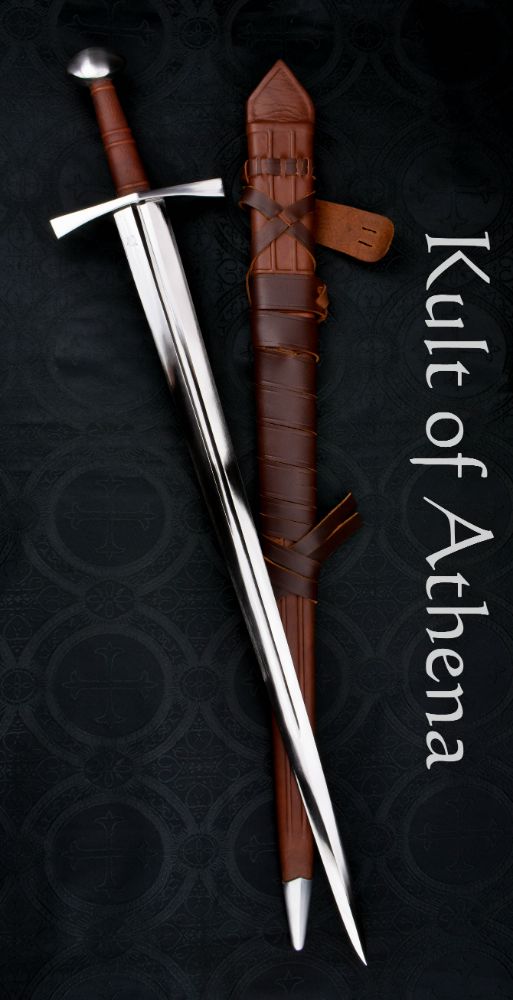
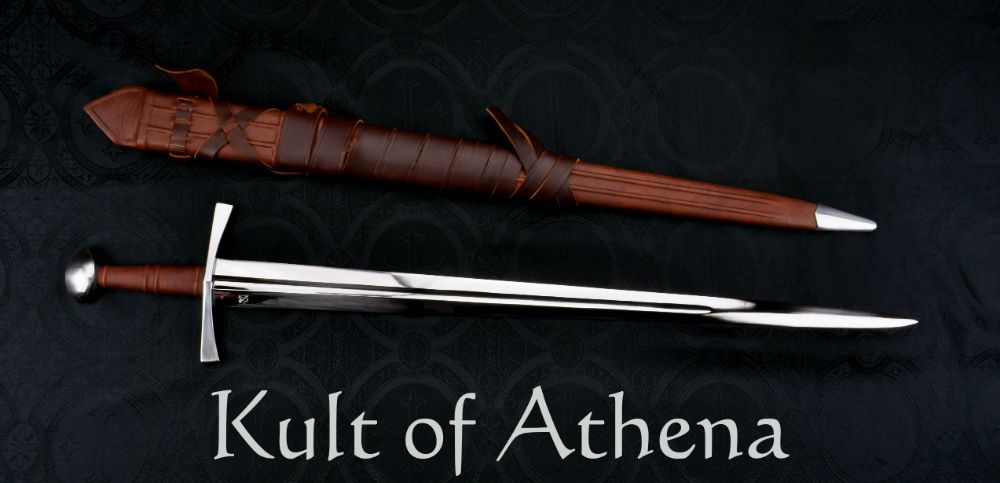

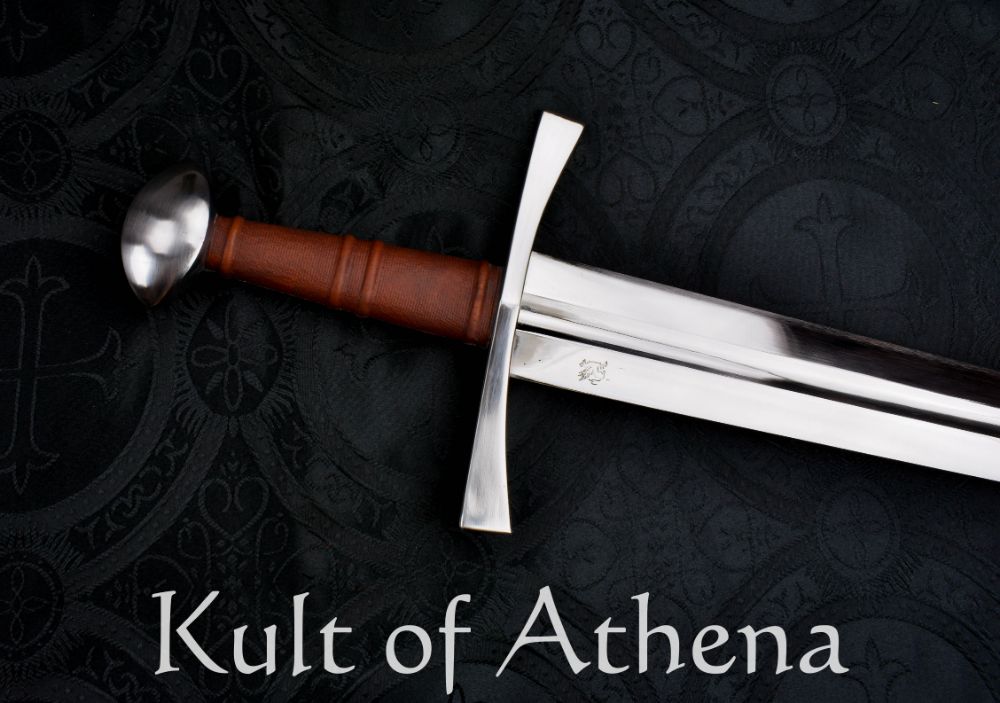


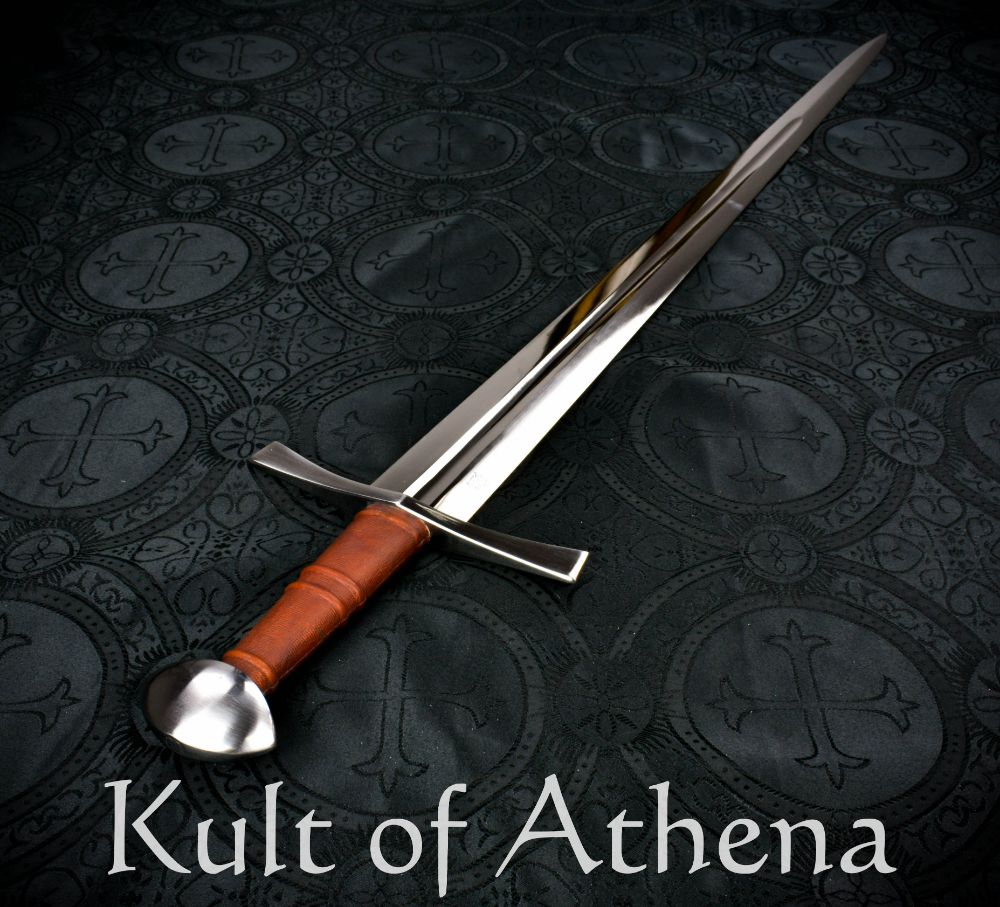

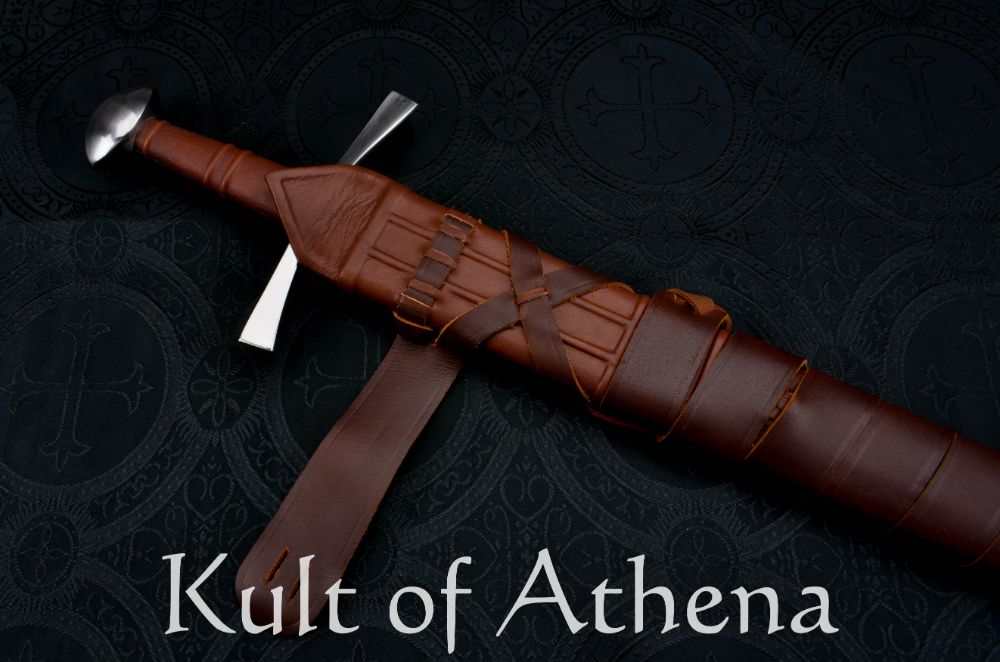
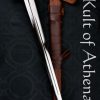
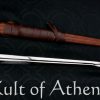

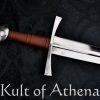



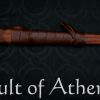
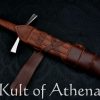
Reviews
There are no reviews yet.